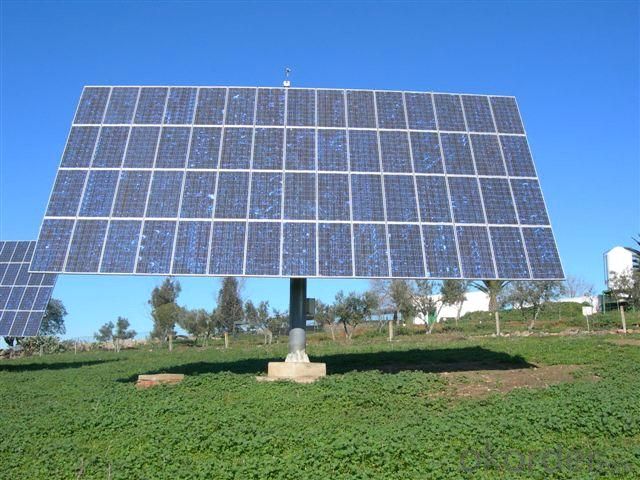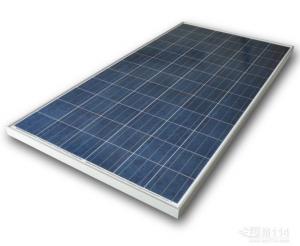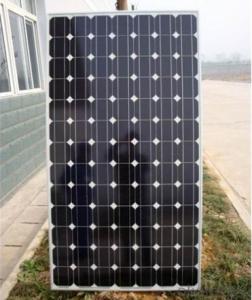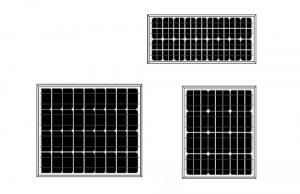Solar Panels Georgia - Solar Monocrystalline Series II (210W-225W)
- Loading Port:
- Shanghai
- Payment Terms:
- TT OR LC
- Min Order Qty:
- 1000 watt
- Supply Capability:
- 20000000 watt/month
OKorder Service Pledge
OKorder Financial Service
You Might Also Like
Specification
1.Structure of Solar Module Description
At present, the crystalline silicon materials (including polycrystalline and monocrystalline silicon) is the main photovoltaic material, its market share of over 90%, and in the future a long time also is still the mainstream of solar cell materials. Polysilicon material production technology for a long time to master in three countries such as America, Japan, Germany into the hands of seven companies 10 factories, forming technology blockade, the condition of market monopoly. Polysilicon demand mainly comes from the semiconductor and solar cells. According to the requirements of the purity is different, divided into electronic level and solar energy. Among them, to the electronic level polysilicon accounts for about 55%, solar energy polysilicon (45%), with the rapid development of photovoltaic industry, the demand for polysilicon solar cell is growing faster than the development of semiconductor polysilicon, more than 2008 solar polysilicon demand expected to electronic grade polysilicon. Only 69 mw solar cell production worldwide in 1994, and is close to 1200 mw in 2004, increased by 17 times in just a decade. Experts predict solar photovoltaic industry in the 21st century first half will become one of the most important foundation energy than nuclear power.
2.Characteristics of the Solar Module
| Max Power Voltage Vmp (V) | 27.6 | 27.9 | 28.2 | 28.6 |
| Max Power Current Imp (A) | 7.60 | 7.70 | 7.80 | 7.85 |
| Open Circuit Voltage Voc (V) | 33.0 | 33.3 | 33.7 | 33.9 |
| Short Circuit Current Isc (A) | 8.48 | 8.61 | 8.71 | 8.85 |
| Max Power Pm(W) | 210 | 215 | 220 | 225 |
3.Limits of the Solar Module
Operating Temperature ﹣40℃to+85℃
Storage Temperature ﹣40℃to+85℃
Max System Voltage 1000VDC(IEC)/600VDC(UL)
4.Specifications of the Solar Module
Material | the Solar Module |
Cell | Monocrytalline Cell 156X156 mm |
Packing | 720 Pcs/40ft (H) Container |
| Weight | 17kg |
| Tolerance | 0~+5W |
Certificate | TUV VDE UL |
5.Applications of the Solar Module
1.Electricity
2.Heat energy
6.IMages of the Solar Module



FAQ
1. Q: Do you have your own factory?
A: Yes, we have. Our factory located in Jiangyin city, jiangsu province.
2. Q: How can I visit your factory?
A: Before you take off from your country, please let us know. We will show you the way,or arrange time to pick you up if possible.
3. Q: Do you provide free sample?
A: Usually we do not offer free sample
4. Q: Could you print our company LOGO on the nameplate and package?
A: Yes, we can do that.
- Q: Can solar panels be used in hot climates?
- Yes, solar panels can be used in hot climates. In fact, solar panels are more efficient in hot climates as they thrive in high temperatures. However, it's important to ensure proper installation and maintenance to prevent overheating and maximize their performance.
- Q: Can solar panels be used in commercial buildings?
- Yes, solar panels can definitely be used in commercial buildings. In fact, many businesses are increasingly installing solar panels on their rooftops or in open spaces adjacent to their premises. Solar panels are a sustainable and cost-effective solution for generating renewable energy, reducing electricity bills, and lowering carbon footprints in commercial settings.
- Q: Can solar panels be used for powering a marina or boating facility?
- Yes, solar panels can be used to power a marina or boating facility. Solar panels are a sustainable and efficient source of electricity that can provide clean energy to run various equipment, lighting, and charging stations at the marina or boating facility. Additionally, solar power can help reduce dependency on fossil fuels and lower operating costs in the long run.
- Q: Why can not the solar panel load directly?
- Solar panels (also known as solar modules) are the core of solar power systems and the most important part of solar power systems.
- Q: Can solar panels be used off-grid?
- Yes, solar panels can be used off-grid. Off-grid solar systems are designed to generate electricity independently from the utility grid. These systems can store excess energy in batteries for use during times when the sun is not shining or when power is needed at night. Off-grid solar panels are commonly used in remote locations, such as cabins, RVs, boats, and even in developing countries without access to reliable grid electricity.
- Q: I was thinking of having some installed on our rooftop and was wondering if it would be worth the cost? The house is located in Sac, Cali. The panels would face the sun 2 months out of the year and in the summer roughly 4 hours of straight sun.
- You can log in alibaba,i purchased about 20000watts 2 years ago and solar panels work efficiency is fairly high. I hope my answer help you !
- Q: Can solar panels be installed on a streetlight?
- Yes, solar panels can be installed on a streetlight. This allows the streetlight to be powered by solar energy, reducing the reliance on traditional electricity sources and making it more sustainable.
- Q: Can solar panels be installed on golf courses or recreational facilities?
- Yes, solar panels can be installed on golf courses or recreational facilities. These places often have large open spaces and ample sunlight, making them suitable for solar panel installation. Additionally, this can help these facilities reduce their energy costs and contribute to a more sustainable and eco-friendly operation.
- Q: How efficient are the solar panels....?
- DS's solar panels convert 22% of their available energy into electrical power. This may not sound very good, but it is much better than most solar panels. Most solar panels on people's houses, for example, are fairly inefficient. Less than 4% of the energy that reaches them will be converted to electricity. DS's panels are so efficient, in fact, that unless the ion propulsion drive is running, DS is producing far more power than it needs.
- Q: With no moving parts, no fuel piping and so on...
- ITS TO DO WITH THE PRODUCTION PROCESS
Send your message to us
Solar Panels Georgia - Solar Monocrystalline Series II (210W-225W)
- Loading Port:
- Shanghai
- Payment Terms:
- TT OR LC
- Min Order Qty:
- 1000 watt
- Supply Capability:
- 20000000 watt/month
OKorder Service Pledge
OKorder Financial Service
Similar products
Hot products
Hot Searches
Related keywords


































